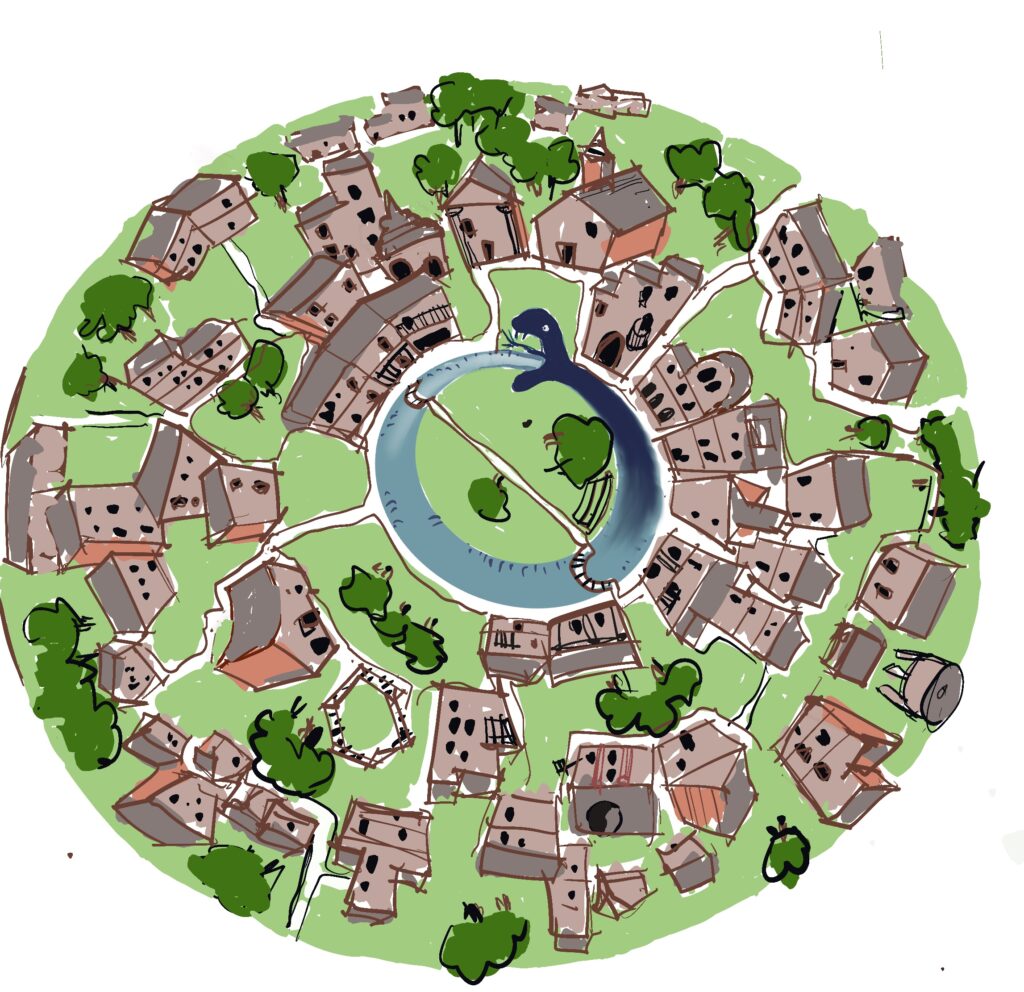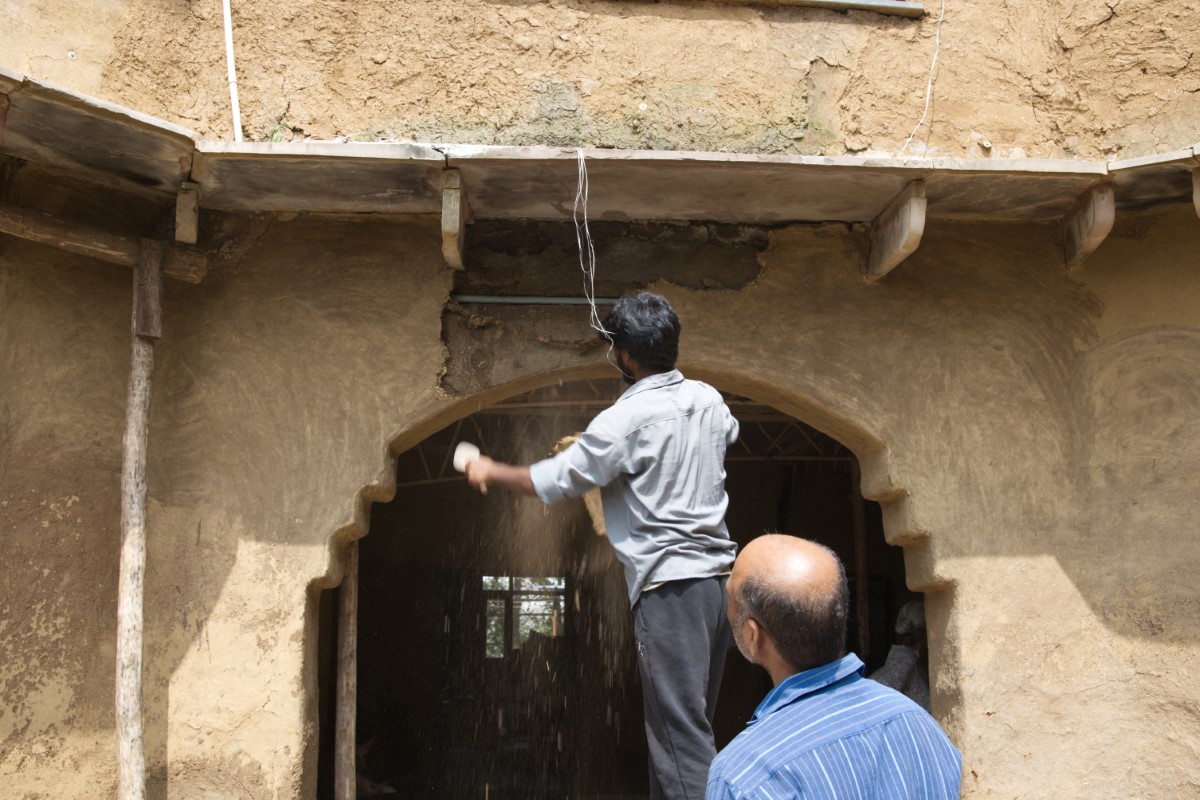Ouroboros is an emblematic serpent of ancient Egypt and Greece, represented with its tail in its mouth, continuously devouring itself and being reborn from itself.

For any profession to thrive and grow, it must fight for its rightful survival amongst competing professions. The current scenario in India is dominated by a host of IT-related and some quick-return, guaranteed professions.
The entire issue of a specific profession targeting the provision of specified services to address the issues of shelter, spatial distribution of functions, judicious use of resources and the cultivation of a design culture in the country is a formidable task.
Architecture as a profession, as well as the other visual arts, must own up to a collective failure in this objective. The exaltation of an ancient cultural ethos creates an unintentional obstacle in the promotion and growth of ‘perplexing’ subjects such as the profession of architecture; it is seen to be somewhere between engineering and art, and as a result, remains a casualty. There isn’t much urgency displayed by the government in giving it a special status or cadre preference in jobs.
One may find this strange and paradoxical, but barring a few metros and urban centres, architecture as a profession has failed to establish a professional identity.
In scrutinising the reasons for this lackadaisical status of the profession, where should one look—Education? Practice? Professional regulations, Governmental patronage? Should we be concerned?
A quick review of some of the above is in order.
The profession of architecture, as well as some others, is passing through a momentous transition. For more than 60 years, the indicators and guidelines for architecture education would come from Western know-how, through literature and case studies, or brought to the classrooms by teachers largely educated abroad. This linear knowledge transfer was channelled through a five-year course open to pedagogical interpretation, less by the institutional philosophy and more by the individual interpretation of the teacher.
Today, confronted with a deluge of information, know-how transfer and exchange, and cultural barriers having fused to alarming proportions, the matter of designing the correct course curriculum has acquired an urgency. The course is no shorter nor less intense, but there is the burden of intense awareness of environmental, sustainability, climate response, and social responsibility issues. It can be long-drawn, slow and, for the uninterested, torturous. All the more so, since many young students get taken in by an illusory perception of the profession.
The architecture course demands training in visual conceptualisation, systemic and analytical thinking, and universal problem-solving techniques, design in general, environmental awareness, and multidisciplinary coordination and innovation. An interest in the visual and other art forms, computer programming, social activism, historical appreciation, political participation and championing humanism helps. Engineering knowledge, especially interest in structures and many other specialisations, contributes to confidence-building and raising the bar of expectations.
During the tenure of the study, therefore, there is a disconnect between anticipations and the curriculum. Paradoxically, the vast range of inputs that promise all-around development appears to be a pointless excursion for some who lose interest or drop out, only to surface later, as has often been seen, making a name for themselves in a diverse but parallel field.
The architect as a standalone professional does not find a mention even in the past glorious heritage, which includes temples and palaces.
The unknown sculptor often steals the thunder. Architecture as a profession is still viewed as elitist—in perception, not in actuality. For the common man, it is something sitting right up there alongside some other cryptic ones, such as space scientists, genome researchers, cartographers, or museum curators.
For the simple-minded countrymen, cutting across the class barrier, it’s easier to understand and accept a god man – ‘Baba’. We are all witness to their phenomenal following!
The bottom of the demographic pyramid does not relate to architecture as an independent profession. In fact, very few have a fuzzy idea about it. Most are quite content with substituting the ‘architect’ with ‘engineer’. The thought that one must pay a very ‘high fee’ to someone who would draw up some blueprints (and nowadays they are not even blue – an indicator of something specially made for the client!) is still not very palatable.
Architecture, understandably in its broadest sense, is shelter. The public still perceives the services of an architect as limited to helping in building a house. The enlightened ones call it ‘designing’ a house. And a vast majority of the students graduate to do just that and build a career around it. Nothing wrong with that.
The schools, on the other hand, prepare students to sculpt space (ironically, thinking outside the box!). To think about design, and develop logic and problem-solving skills.
The more things change, the more they stay the same. The newly graduated is often an idealist. The product of an edifice erected upon the pseudo sense of superiority induced into teaching methodology by way of a hero worship cult (around a handful of known successful professional ‘starchitects’) and the idealistic Howard Roark, self-aggrandising objectivism and branding narcissism detaches them from real day-to-day life. The surrounding circumstances do not help much.
The real-world situation jolts the students to taste the competitive open market. Most newly qualified students meet with a depressing sense of reality.
The few tenacious students who wish to extract the most out of their creativity and the skills acquired go on to search for the appreciative niche clientele. Those who still feel incomplete opt for postgraduate study to fill the void. The great Indian market has an incredible range to accommodate all, from the most mundane to the most exclusively brilliant architect.
By and large, we exist in an environment devoid of scientific temperament. The spirit of enquiry is rebuffed by the imposition of pre-ordained explanations, resulting in a regressive environment for inquisition. Public imagination is entrapped in a medieval mind space; scientific thinking naturally is relegated to the back row.
Like the Kumbh Mela pilgrims unhesitatingly drinking polluted water, national news headlines showing the act of the college Principal covering the classroom walls with cow dung, or our sustained failure to clean the Ganga and accepting a frothing Yamuna.
Clearly, a professional recognition at a national level is a distant dream.
It is such a tragic paradox that architecture as a profession in modern India has to struggle to find its own space. The good news is that we have already started the journey to self-discovery.
So, are we doing enough to remedy the situation? Should we be worried? No.
We are on a long-drawn path to a formidable task. Many actors are contributing in many ways to bring credibility and acceptance to the profession. Yes, there is competition in the field, sometimes unfair. There are too many centres of power. Not enough qualified faculty and too few schools. The outreach and penetration are abysmal for a country as large as ours, and we are not firmly in the driving seat. There is negligible government support. Many architects believe that the professional bodies have let them down. Progress is painfully slow.
Architects are a fiercely opinionated community. Nearly as many who agree with the above statements will oppose it. The optimistic lot see a bright future ahead, negating the concerns of those who consider the profession as an Ouroboros eating into itself!
It is therefore reasonable to believe that every little effort, even if superficially it seems to be regressive, is in fact a step in the right direction. If you look back at the last 100 years, you will notice that at least in the metro cities, we have made a beginning in imparting an identity to the profession.
It takes a lot to shed the burden of superiority imposed upon ourselves by the inheritance of a remarkably rich past, and also our colonial mindset, and create a new vocabulary of our own.
Architects, especially those who have shown the tenacity to persist, change and adapt with time, are beginning to thrive. It is noteworthy that a handful of architects, deep in their professional commitment, have expanded their vision and efficiency by using state-of-the-art drawing, structural and services software and have made their presence felt beyond our borders. While many other professionals, fully mindful of the certainty that their creations may never come to fruition, continue to push the limits of innovation, creativity and techniques to find rational solutions fusing functional rationality with spatial richness, aesthetic fulfilment and pure joy!
All this while, quite a few trained architects continue to stray away into other creative fields.
For a very long time, I was intrigued by the statement of the great Shahanai maestro Ustad Bismillah Khan in an interview: “When I play the Shahanai, I can see the musical notes in the air”.
In all seriousness, I have tried but failed to see the musical notes, but am just beginning to understand the depth of the statement. This would be a natural condition, I believe, when you have dedicated your life to a single craft with the focus of a yogi and a maniacal devotion to it. Like the devoted mathematician who sees the universal truth in the equations, the genetic scientist who sees life in a cell, and perhaps some architects who virtually see their innovation in space.
Yes, the dedicated ones do.



